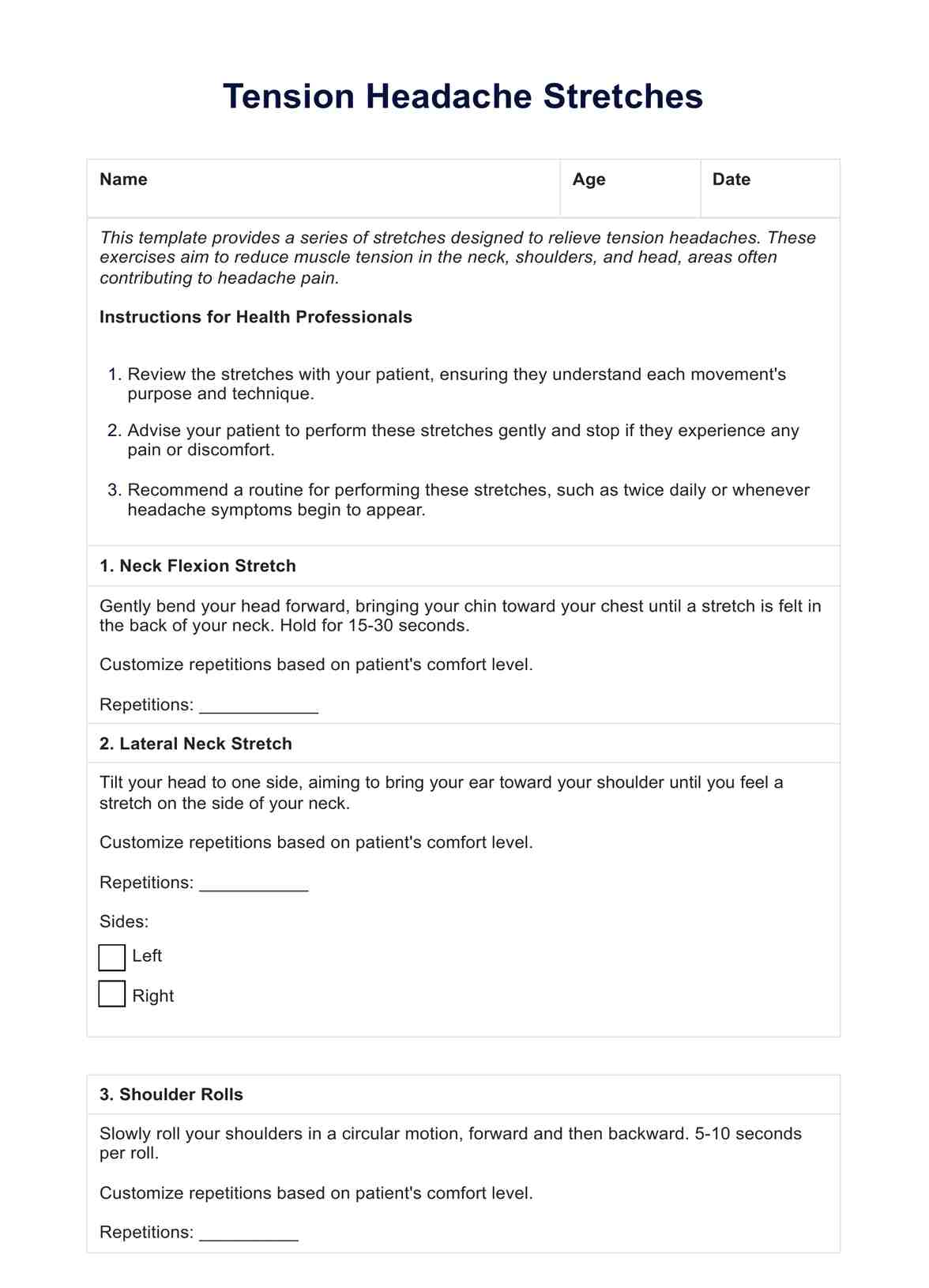Yes, gentle stretching exercises targeting the neck, shoulders, and upper back can help relieve the muscle tension causing a headache.

Tension Headache Stretches
Discover effective Tension Headache Stretches for relief with our guide, designed for healthcare professionals to aid patients. Read now!
Use Template
Tension Headache Stretches Template
Commonly asked questions
Applying heat or cold to the neck and shoulders, performing tension-relieving stretches, and ensuring proper hydration can quickly relieve tension headaches.
Applying gentle pressure to the base of the skull, the bridge of the nose, or the temples can help relieve tension headaches.
EHR and practice management software
Get started for free
*No credit card required
Free
$0/usd
Unlimited clients
Telehealth
1GB of storage
Client portal text
Automated billing and online payments











